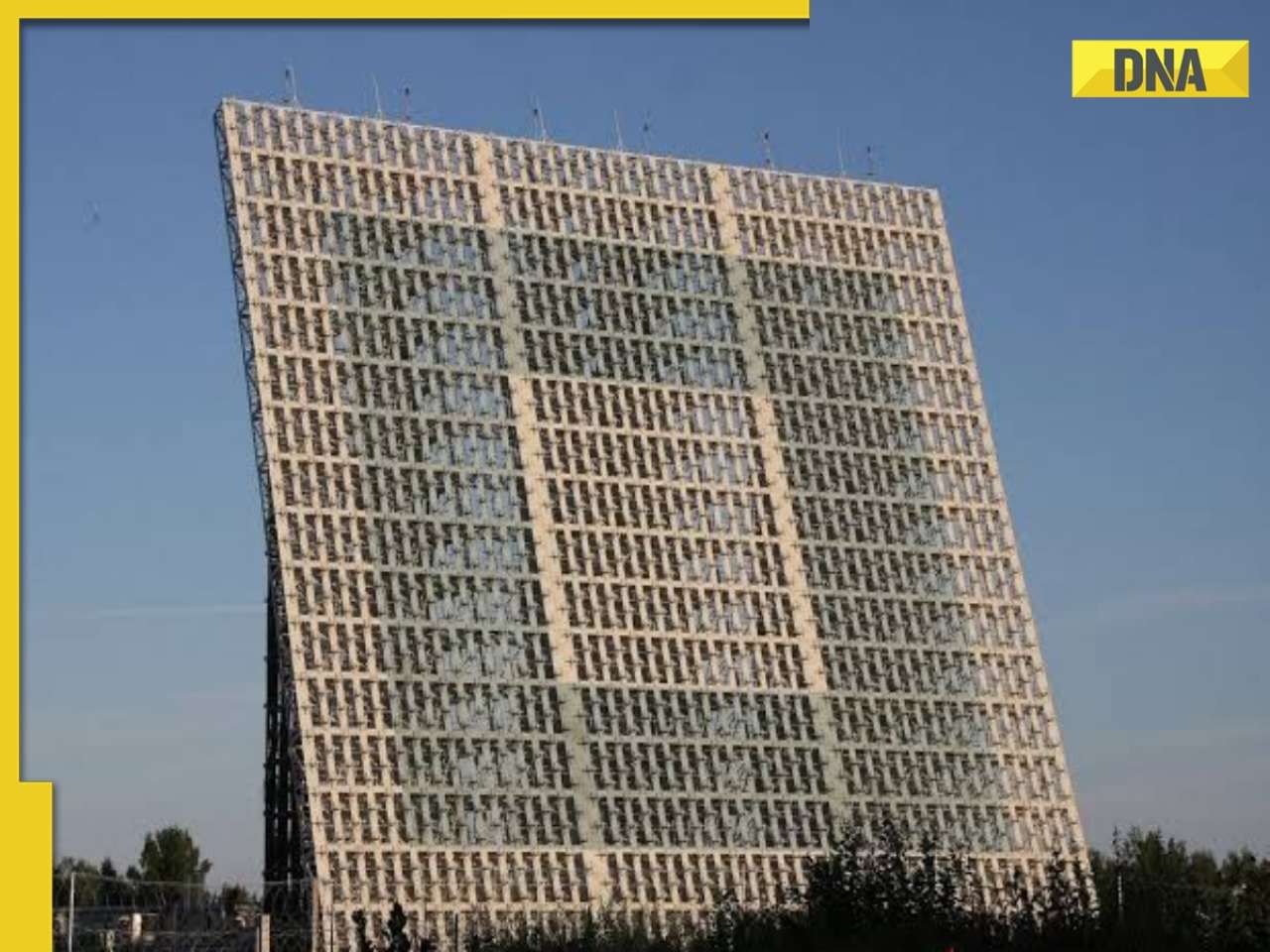
The radar is like a super-powerful “eye in the sky” that can monitor and alert against dangers well in advance, making it an important step for strengthening national safety.
India is close to finalizing a $4 billion defense deal with Russia to acquire the advanced Voronezh long-range radar system. This system is designed to help track ballistic missiles, aircraft, and even objects in space. Simply put, it will give India the ability to detect potential threats from far away, improving its security and defense capabilities. The radar is like a super-powerful “eye in the sky” that can monitor and alert against dangers well in advance, making it an important step for strengthening national safety.
India is set to strengthen its defense system with the purchase of the advanced ‘Voronezh’ early warning radar from Russia, according to reports in Indian media. This radar will help detect potential ballistic missile attacks, giving the country a significant boost in its security and defense capabilities.
The advanced radar system, developed by Almaz-Antey, will be set up in Chitradurga, a city in Karnataka. Once installed, it will improve India’s ability to detect missiles, strengthen air defense, and enhance overall surveillance capabilities.
According to Alexander Mikhailov, head of the Bureau of Military-Political Analysis (BVPA), the Voronezh radar system will be crucial for detecting missile threats. Speaking to Russian media outlet Sputnik, he explained that this system works together with Russia’s satellites to quickly identify ballistic missile launches.
When a satellite spots a missile launch, it sends a warning to the Voronezh radar. The radar then checks whether the threat is real or not. According to Alexander Mikhailov, the main job of these radar systems is to confirm if there’s an actual danger, like the large-scale launch of intercontinental ballistic missiles. They also provide important information to help intercept the missiles if needed. Simply put, this system acts as a second layer of defense, ensuring quick and accurate threat detection.
The radar has an impressive range of 6,000 to 8,000 kilometers, which will allow India to keep an eye on large regions, including the Asia-Pacific and the Indian Ocean. Retired Air Marshal Anil Khosla, former Vice Chief of the Indian Air Force, shared this information with Sputnik.
Air Marshal Anil Khosla explained that with growing missile threats in the region, having an advanced early warning system is vital to maintain strategic balance. Early detection helps strengthen command-and-control systems, giving leaders the information they need to make smart decisions during a crisis, he emphasized.
The radar’s wide range will allow India to closely monitor Chinese missile and air activities, particularly in regions like Tibet and Xinjiang.
India faces increasing security challenges in South Asia, including the possibility of neighboring countries deploying advanced missile systems, said Khosla. He added that a modern radar like the Voronezh will help India stay technologically equal to others and tackle these emerging threats effectively.
Positioned strategically in Chitradurga, the radar will improve surveillance of India’s southern and western borders, fitting well with the country’s current military setup. Experts also point out that the Voronezh radar will work smoothly alongside India’s existing defense systems, like the S-400.
The S-400 missile system can monitor airspace up to 600 kilometers, but the Voronezh radar goes far beyond that. According to Mikhailov, this advanced radar can keep watch over both the air and areas near space at distances of up to 8,000 kilometers. In simple terms, while the S-400 is great for closer threats, the Voronezh radar covers a much larger area, giving India the ability to detect potential dangers from much farther away.
Khosla explained that the Voronezh radar system can easily blend into India’s multi-layered defense network. It provides an affordable and comprehensive solution to address the country’s security needs. Simply put, this advanced system will strengthen and enhance India’s ability to counter potential threats effectively.
India has been developing its own Ballistic Missile Defence (BMD) systems, like the Prithvi Air Defence (PAD) and Advanced Air Defence (AAD) interceptors. However, the Russian Voronezh radar can take things a step further by providing more accuracy in tracking and identifying targets, he explained.
The radar can also monitor space, which is important for supporting India’s
expanding space program.
The radar’s capability to track objects on Earth, in space, and even space debris aligns perfectly with India’s civil and military goals. It also supports the country’s growing space program led by ISRO, Khosla explained.
Unlike older radar systems that take a long time to build and set up, the Voronezh radar is designed to be deployed quickly. This makes it crucial for responding to threats in real-time.
Russia has been using the Voronezh radar system since the mid-2000s to replace its older Soviet-era radars.
The system is now being improved with new technology that can work across different frequency ranges, from meter to centimeter wavelengths. This upgrade allows it to track objects of different sizes in the air and near space, measure their distance, and decide if they can be intercepted when needed, Mikhailov explained.
The deal supports India’s Make in India program, as about 60% of the radar’s parts are expected to be made within the country.
Gaining access to advanced Russian technology will support India’s own radar development and boost local research and development through technology transfer agreements, Khosla said.
(The author of this article is a Defence, Aerospace & Political Analyst based in Bengaluru. He is also Director of ADD Engineering Components, India, Pvt. Ltd, a subsidiary of ADD Engineering GmbH, Germany. You can reach him at: girishlinganna@gmail.com)
(Disclaimer: The views expressed above are the author’s own and do not reflect those of DNA)
